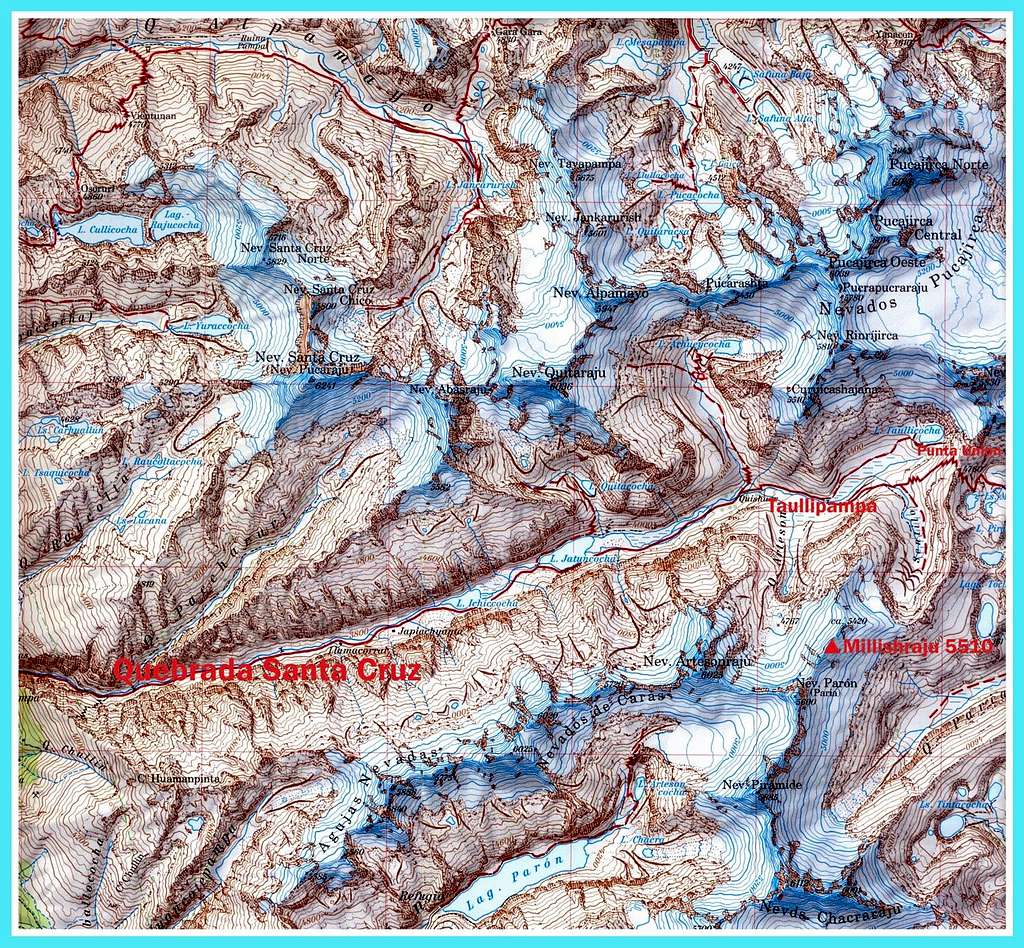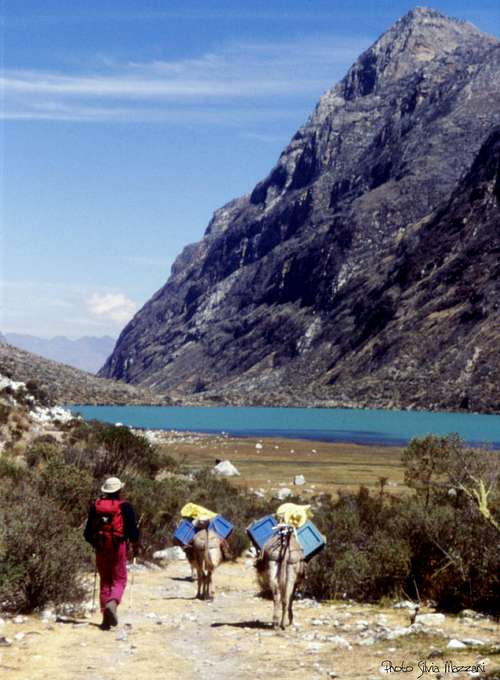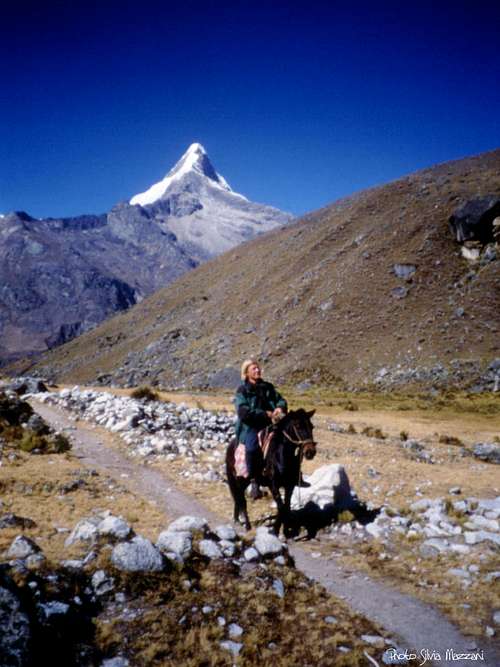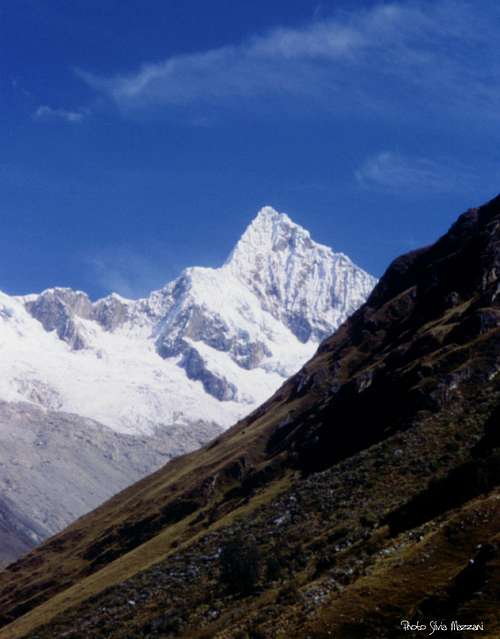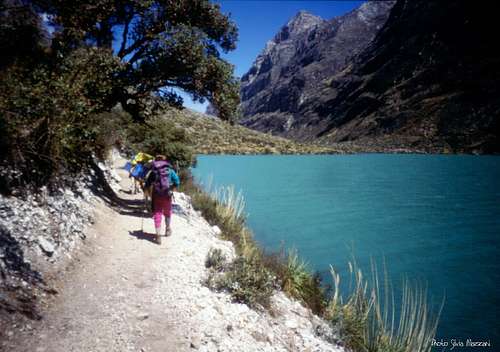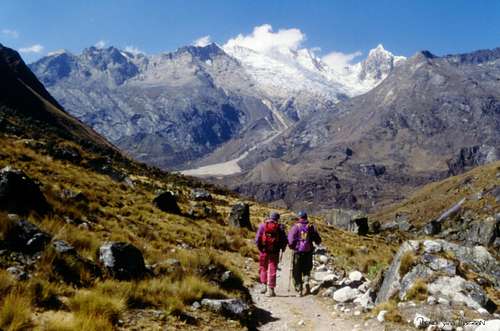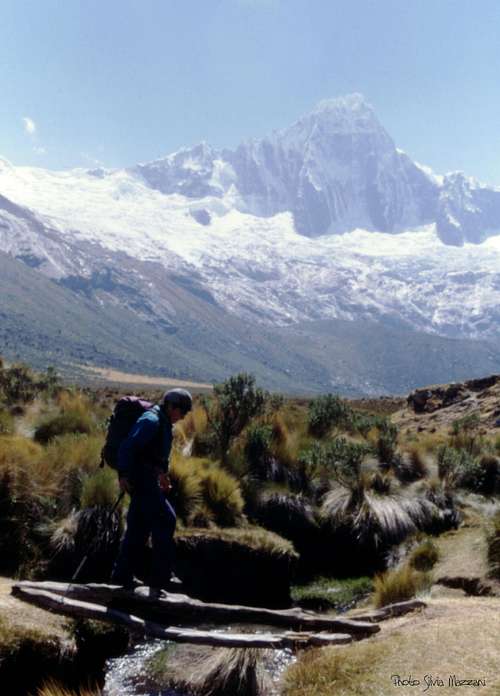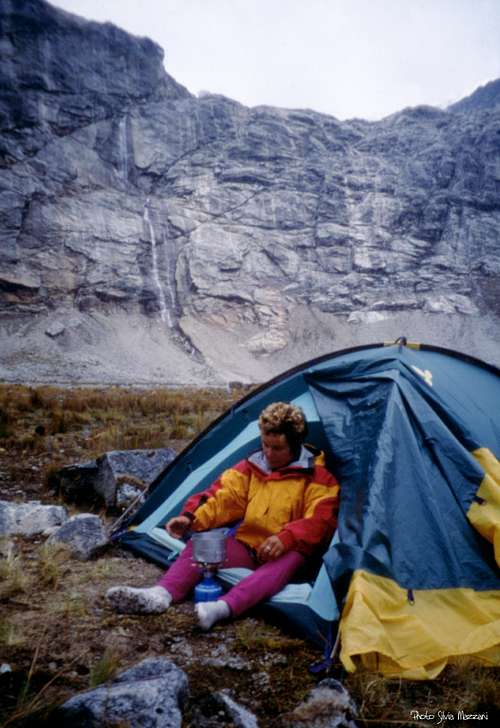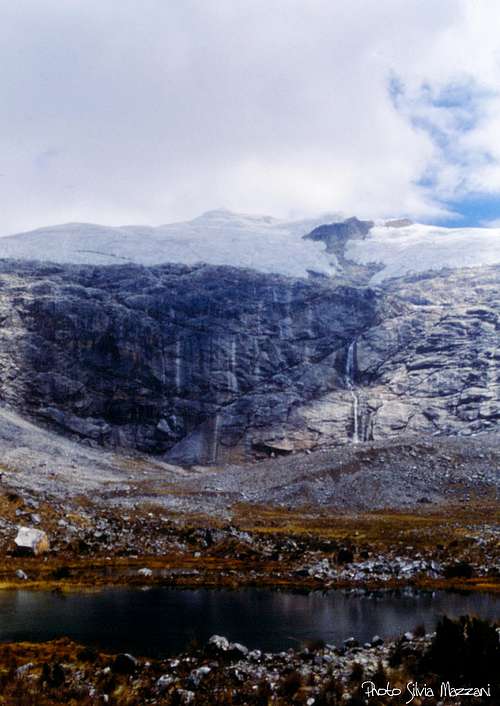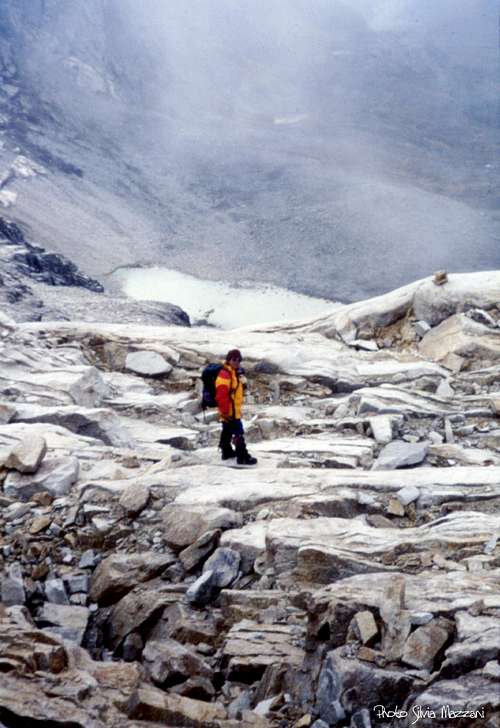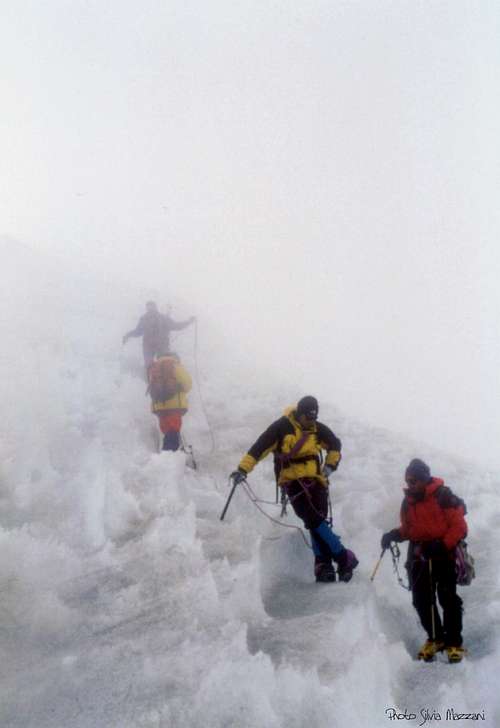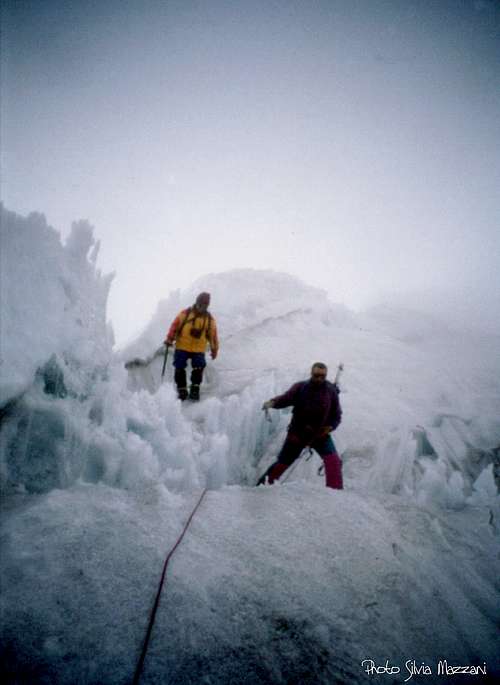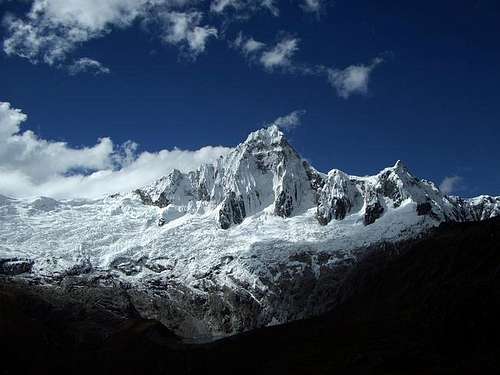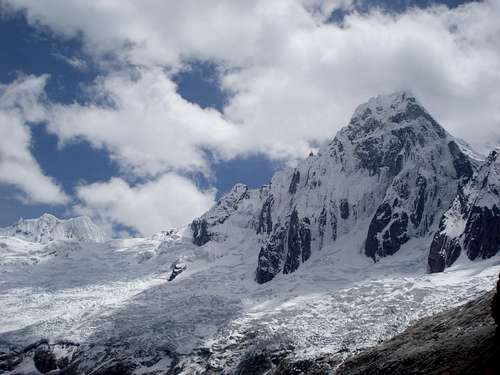-
 4566 Hits
4566 Hits
-
 84.82% Score
84.82% Score
-
 19 Votes
19 Votes
|
|
Mountain/Rock |
|---|---|
|
|
8.94422°S / 77.60484°W |
|
|
Mountaineering |
|
|
Winter |
|
|
18077 ft / 5510 m |
|
|
Overview
Millishraju I and Millishraju II 5510 m
Millishraju I and Millishraju II are a couple of twins snow capped “nevados” belonging to the extensive Huandoy Massif in the Cordillera Blanca, Ancash region. The peaks are located between Nevado Paròn to the South and the small Sentillo to the North in a short side valley starting on the right (left orographic) of Taullipampa. Taullipampa is an extensive grassy plateau located at 4250 meters at the foot of Nevado Taulliraju, at the head of Quebrada Santa Cruz, one of the longest valleys in the Cordillera Blanca, the same one leading to Alpamayo/Quitarajo BC. The trail going up Quebrada Santa Cruz is probably one of the most frequented of the Cordillera Blanca, so expect lots of people, but less then in Llanganuco or Quebrada Ishinca.
Millishraju I and Millishraju II are far, not well known and even less frequented peaks opposing minor technical difficulties and offer a complete view over the Northern sector of Cordillera Blanca. The twin Millishraju involve a quite long approach and therefore their ascent is useful as acclimatization climb in view of more challenging ascents located in the same Quebrada Santa Cruz, as Quitaraju or Alpamayo.

Otherwise to climb Millishraju may be a profitable completion of the famous trek Cashapampa – Vaquería, a plus by means of achieving a profitable summit. This trail is considered as one of the most interesting round trip in Cordillera Blanca in reason of its exceptional beauty and easy access, crossing extraordinary landscapes. Here we can contemplate long wonderful "lagunas" sparkle in the sun and spectacular snow-capped mountains such as Alpamayo, Quitaraju and Artesonraju.
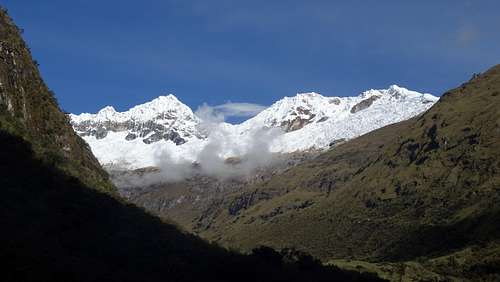
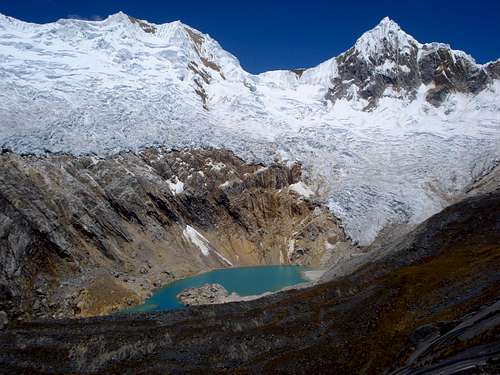
At the head of the "quebrada" the jagged Taulliraju soars skyward like a snow-covered rocky castle Once at the pass of Punta Union 4,750 m, it appears a fantastic variety of scenery, endless Andean valleys and glacial lakes.
History

East of Artesonraju there is a glacier-filled basin, surrounded by Artesonraju itself on the right, the Nevado Parón at the head and a ridge of ice-covered summits (Millishraju) on the left, all about 18,200 feet, heading north-northeast from the Nevado Parón towards Taulliraju. These peaks were climbed for the first time by a German team from Monaco of Bavaria composed by H. Huber, A. Koch, H. Schmidt on august 16th 1955, who climbed along NE and North ridges, then six years later by an italian party from Torino in 1961. See more info here: German Expedition 1955 Afterwards, a Swiss team which climbed these peaks in the year 1965, proposed to call them Millishraju (Twins), as two of them are nearly identical. The first summit starting from the south, Millishraju I (18,078 feet), was climbed on July 30 by Emilio Angeles, Boiler, Comtesse and the Spoerrys along its south ridge. The second summit from the south, Millishraju II (18,045 feet), was climbed on July 29 along a new route on its West face directly to the summit by Georg Hartmann and Ruedi Schatz, Swiss Alpine Club. It was on moderately steep ice.
Getting There
Getting to Lima
There are different flights getting to the Aeropuerto Internacional "Jorge Chavez" in Lima, both from Europe and North America, obviously many more from South America. The airport is situated in Callao (about 12 km West to downtown).
Getting to Huaraz
Huaraz, the capital of the Ancash region and Cordillera Blanca, is a lively and bustling city located about 3000 meters above sea level, which offers several opportunities for accommodation and food, and also easily the possibility to arrange on-site transportation and trekking for people who haven't previously booked any service. Sometimes there are flights joining Lima and Huaraz, but nor regularly. The best way to reach Huaraz is at moment a 6-8 hours trip by bus or private minibus (if you're travelling with a group or an organized expedition). Currently comfortable coaches provide a good transportation from Lima to Huaraz. There are six different bus companies; the best ones are Cruz del Sur, Movil Tours and Ancash Express.
Getting to Cashapampa
The starting point of the trail to Quebrada Santa Cruz is situated in Cashapampa 2900 m, a little "pueblo" located in the Northern Cordillera Blanca, some km N to Caraz. In Huaràz you can take a "colectivo" (public transport) to Caràz and another one from Caràz to Cashapampa. Otherwise in Huaràz you can also arrange with a small truck owner to bring you straigth to Cashapampa. This is surely the quickest way and the most convenient option if you share the transport with other passengers. The best choice is to arrange previously for "burros" (donkeys), anyhow if you haven't provide for in Huaraz, in Cashapampa you can hire arrieros (muleteers) with the traditional burros (donkeys) to help you to carry your gear along the trail. Be aware that if you didn't pre-arranged burros in Huaraz and you arrive late in Cashapampa, you may end up staying overnight there.
Quebrada Santa Cruz trail description
Cashapampa 2900 m - Llama Corral 3800 m
At first the path rises quite steep along the valley, inside a narrow canyon between high rocky walls. In the first half we gain in altitude, in the second half in the distance. After the rocky gorges, the valley widens and the trail becomes less steep to arrive after about 2,30-3 hours at Llamacorral, where it's convenient to arrange the first camp.
Successively we cross a dry floodplain with views over Artesonraju, getting to a signpost indicating the beginning of the Quebrada Arhuaycocha, leading to Alpamayo and Quitaraju BC. Continue to the right up the main valley without entering the forest, getting the plain called Taullipampa at 4200 meters, just below Taulliraju breathtaking rocky castle.
From Taullipampa we rise again to arrange the camp on a plan a bit above, just in front of the side valley that will lead us to Millishraju. 4 hours from Llamacorral.Millishraju NE route report
North-East Ridge Normal Route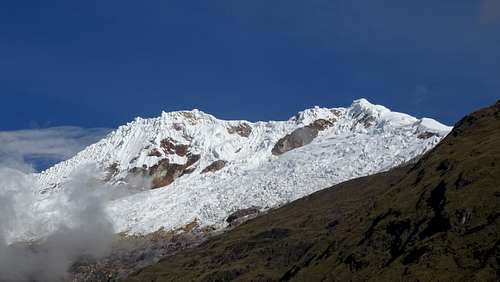
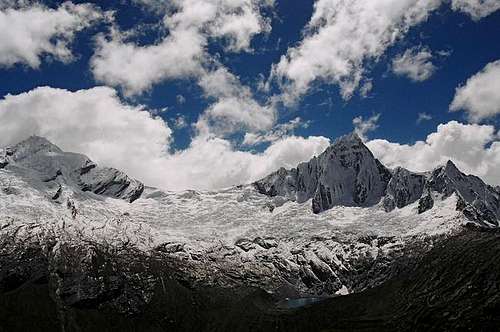
Essential gear
Rope, crampons, long axe, eventually some pickets and 1-2 ice-screwsRed Tape
Nevados Millishraju and the whole Cordillera Blanca are located within Parque Nacional Huascaràn, one of most spectacular high mountain area in Perù, established in 1975 and acknowledged as an Unesco World Natural Heritage in 1985. Unesco Link here: Unesco infoThe Huascaràn National Park is administered by the Instituto Nacional de Recursos Naturales (INRENA). An entrance fee is due. In 2011, the fee for the Huascaran National Park was 65 Soles for 7 days.
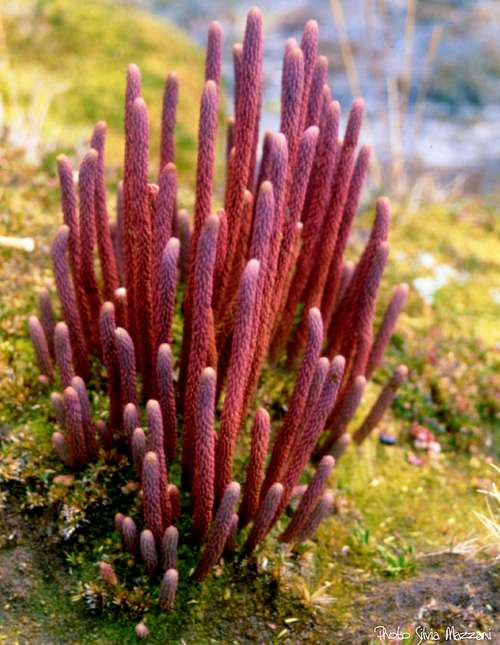
Since 2011, officially nobody is allowed to climb without a Mountain Guide, except for the persons who are members of a Mountaineering Association. In this case, the permit can be obtained at the National Park Office in Huaraz, showing the Alpine Club card. Always be respectful of this fragile landscape. Carry-out everything you bring in and any litter that you carry-in or that you find on the routes and help to conserve the beautiful landscape! Take care of nature as usual in the natural sites and particularly within the boundaries of all the natural parks.
When to Climb
The dry season in Cordillera Blanca goes from middle May to the early September, coinciding with the local winter, being the Cordillera Blanca situated in the southern hemisphere. Anyhow, still there is usually too much snow dust in May and June for the ascents, the months of July and August are more indicated. Usually the rainy season starts in early September.Climate and conditions
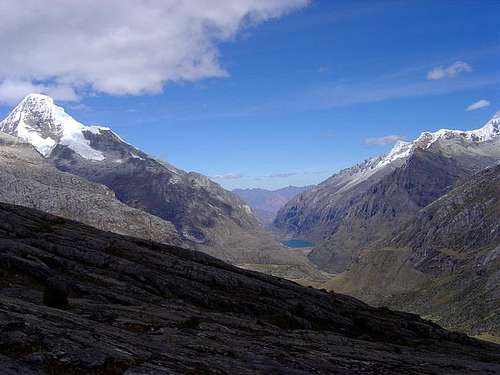
Accomodation
There is a wide choice of options for accomodation and meal in Huaraz.Meteo
Meteo CarazGuidebooks and maps
"Climbs of the Cordillera Blanca of Perù" by David Sharman, 1995 - in English
Maps
Alpenvereinskarte 0/3a Cordillera Blanca Süd (Perú) 1:100000


